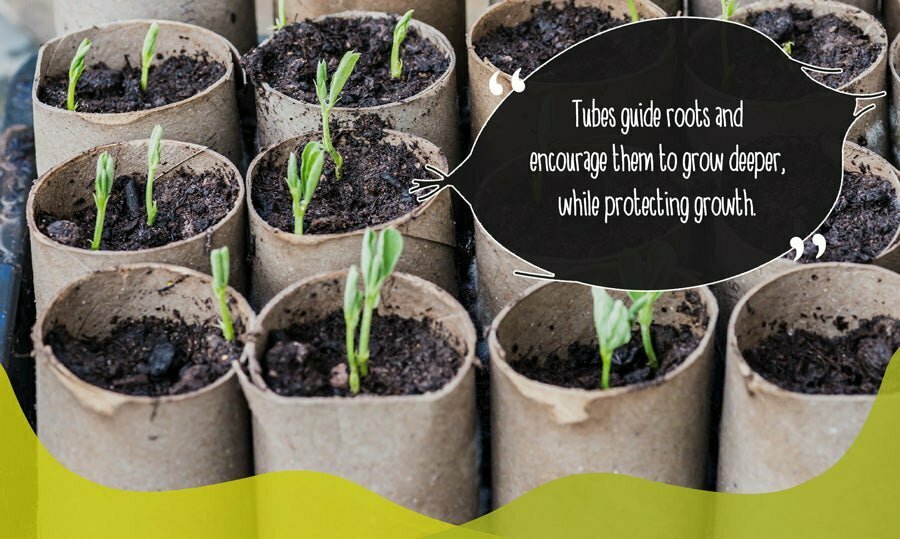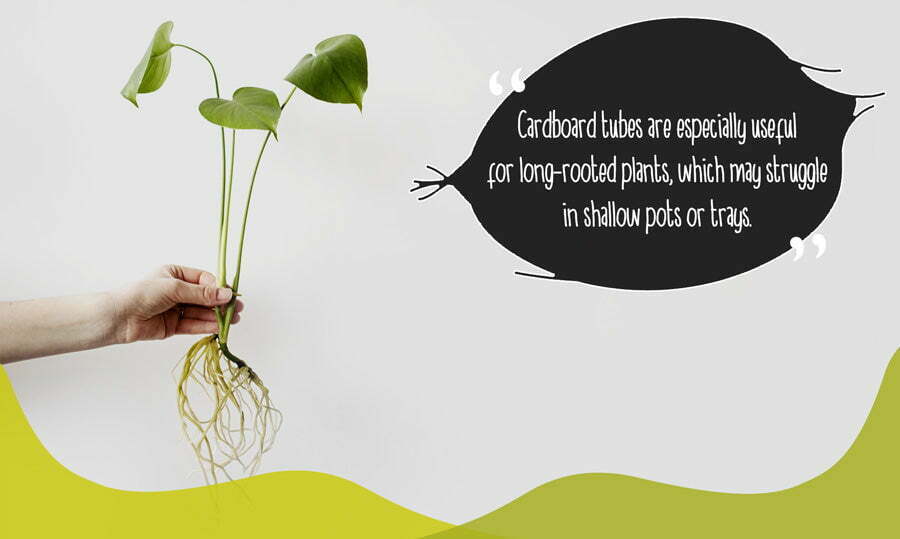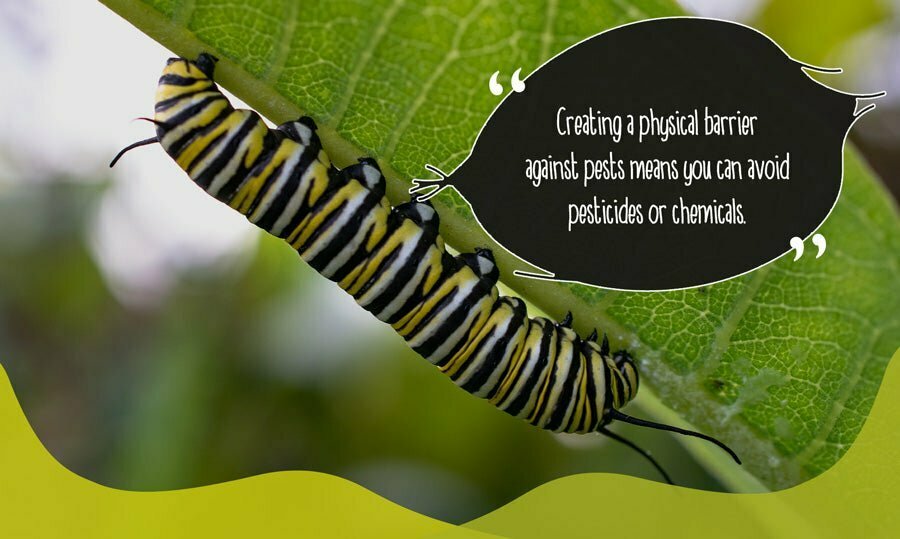Using toilet roll tubes for planting
Traditionally, peat-based seedling planters or linings were used to start seeds growing. However, using industrially produced peat damages the environment.
While being a natural, biodegradable product, peat is an unsustainable resource. Using cardboard planters with an eco-friendly substrate, like coco coir, is a more environmentally friendly alternative.

Preparing to plant with cardboard tubes
Kitchen towel or toilet roll tubes can be utilised in the garden, with some simple preparation:
- Cut two short, straight lines, opposite each other at one end of the tube.
- Fold the tube in on itself to create a pot shape, which can be filled with a growing substrate.
- If the pots are unsteady, tie a few together with natural twine to keep them upright.
- Once ready to plant out, open up the bottom of the pot to allow roots to grow into the soil and avoid cardboard leaching water away.
Alternatively, plant the tubes as they are, keeping the tops above the soil surface. Dot a few seeds into the soil within the tube and water.
Tubes guide roots and encourage them to grow deeper while protecting growth. This allows seedlings to thrive early and grow into healthy adult plants.
Once the roots reach the bottom of the tube, they’re ready to be planted out.
This method is especially useful for long-rooted plants like peas, broad beans, and other legumes. These types of seedlings may struggle when planted in traditional shallow pots or trays.
Cardboard tubes remove the need for planting with expensive plastic ‘root trainers’. As the tubes can be planted into the soil there is no need for extraction or devices.

Planting out
You can easily check the progress of roots by observing the bottom of the cardboard tubes. Once roots reach the bottom the entire tube, soil, and plant can be planted out.
Score one side before planting to gently open the tubes. This allows roots to grow out faster into the soil.
Pest guards
If you know the type of plant you are trying to raise is a common victim of garden pests, consider leaving tubes whole for protection.
Another approach is to cut into a two – three-inch tall strip, which can be placed as a border around seedlings as they grow. This creates a physical barrier to keep snails and caterpillars away.
Toilet roll tubes submerged in the soil also protect roots from pests as the plants grow, allowing for healthy root growth.
Planting seedlings in tubes elevates them above the soil line, shielding seedlings while they are vulnerable young plants. Creating a physical barrier against pests means you can avoid pesticides or chemicals, allowing for organic growing and natural gardening.

Cardboard tubes and coco coir
An eco-friendly soil substrate like coco coir makes the perfect mindful complement to your gardening efforts with cardboard tubes.
Made from salvaged coconut husks, coco coir is a completely natural peat alternative that promotes healthy plant growth.
Highly water retentive, it provides a reliable water source for growing plants and reduces overall water usage.
Coco coir is naturally sterile. This quality enhances the chemical-free pest control offered by the use of cardboard tubes in the garden.
Choosing coco coir
In all its forms, coco coir promotes healthy root growth. This is largely due to the high level of porosity it offers compared with ordinary garden soil. In addition, it provides better aeration for root systems.
Coco dots are an easy way to give seedlings a healthy start. Contained in a net to make for easy, tidy potting, this substrate can be used with cardboard tubes to further protect young plants as they grow.
For more information on incorporating coco coir into your garden and plant care, check out our blog. It contains a range of helpful advice: from sowing tomato seeds in pots, to choosing plants for an apartment balcony.
When you’re ready to take the next step, ourcoir products store and browse our complete selection of sustainable and more natural products for the home and garden.










